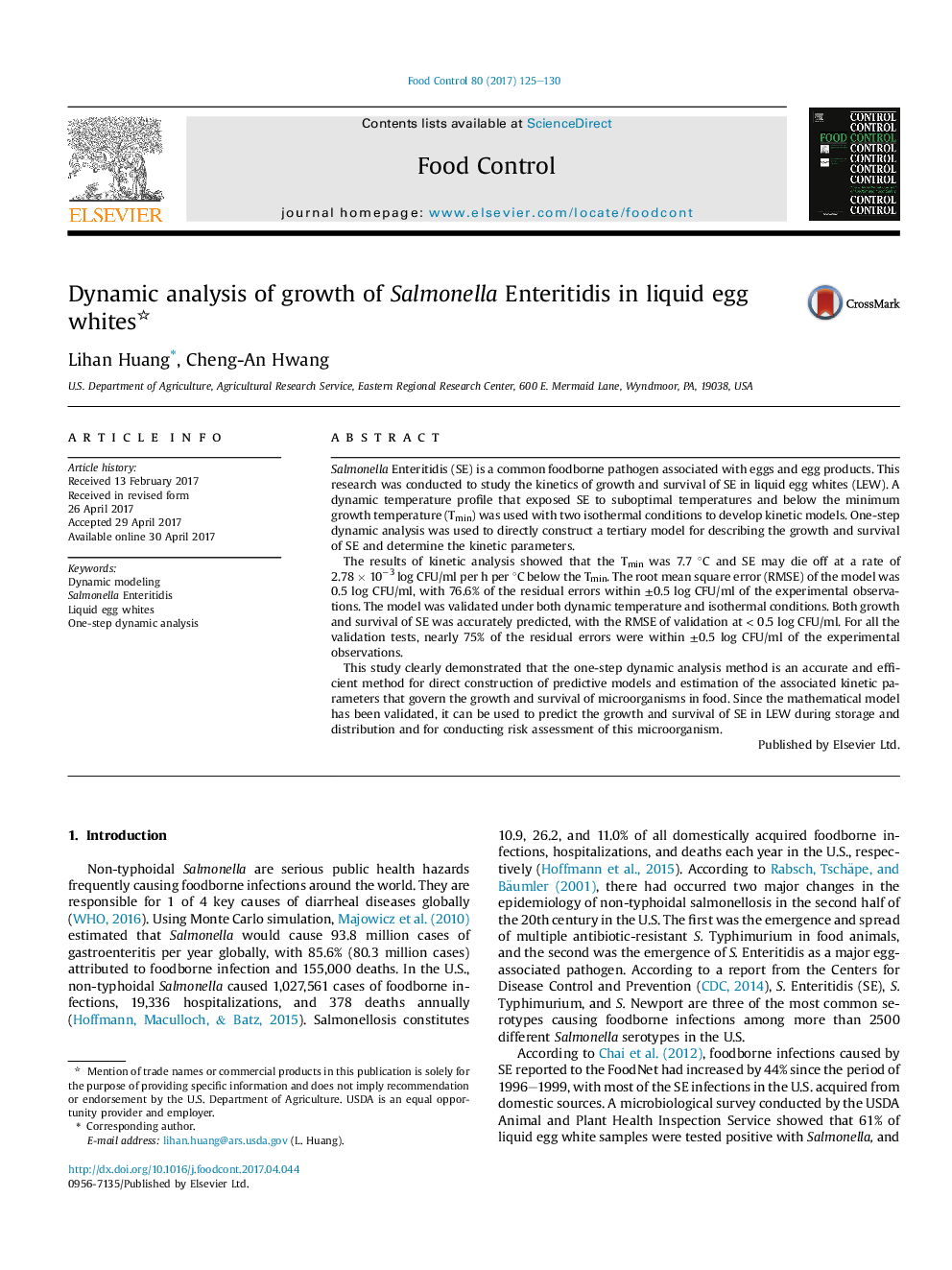| Article ID | Journal | Published Year | Pages | File Type |
|---|---|---|---|---|
| 5767234 | Food Control | 2017 | 6 Pages |
â¢Dynamic growth of Salmonella Enteritidis (SE) in liquid egg whites (LEW) was investigated.â¢One-step dynamic analysis was used to develop predictive models.â¢The kinetic models were validated under both dynamic and isothermal conditions.â¢The models can be used to predict the growth of SE and conduct risk assessments.
Salmonella Enteritidis (SE) is a common foodborne pathogen associated with eggs and egg products. This research was conducted to study the kinetics of growth and survival of SE in liquid egg whites (LEW). A dynamic temperature profile that exposed SE to suboptimal temperatures and below the minimum growth temperature (Tmin) was used with two isothermal conditions to develop kinetic models. One-step dynamic analysis was used to directly construct a tertiary model for describing the growth and survival of SE and determine the kinetic parameters.The results of kinetic analysis showed that the Tmin was 7.7 °C and SE may die off at a rate of 2.78 Ã 10â3 log CFU/ml per h per °C below the Tmin. The root mean square error (RMSE) of the model was 0.5 log CFU/ml, with 76.6% of the residual errors within ±0.5 log CFU/ml of the experimental observations. The model was validated under both dynamic temperature and isothermal conditions. Both growth and survival of SE was accurately predicted, with the RMSE of validation at < 0.5 log CFU/ml. For all the validation tests, nearly 75% of the residual errors were within ±0.5 log CFU/ml of the experimental observations.This study clearly demonstrated that the one-step dynamic analysis method is an accurate and efficient method for direct construction of predictive models and estimation of the associated kinetic parameters that govern the growth and survival of microorganisms in food. Since the mathematical model has been validated, it can be used to predict the growth and survival of SE in LEW during storage and distribution and for conducting risk assessment of this microorganism.
